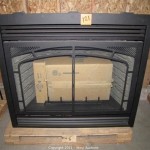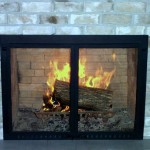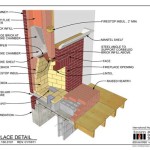Small Living Room Design With Corner Fireplace: Maximizing Space and Ambiance
Designing a small living room presents unique challenges, particularly when incorporating a feature like a corner fireplace. A corner fireplace can be a focal point, adding warmth and character to the space, but strategic planning is essential to prevent it from overwhelming the room. This article explores design considerations, furniture arrangements, and decorating techniques to effectively integrate a corner fireplace into a small living room, maximizing both space and ambiance.
Strategic Space Planning and Measurement
Before any furniture is selected or decorative elements considered, meticulous space planning is paramount. Accurate measurements of the living room, including the dimensions of the corner fireplace (width, depth, and height), are crucial. These measurements serve as the foundation for determining the optimal furniture sizes and arrangements. Consider the fireplace's protrusion into the room and how it impacts the available floor space. Digital tools, such as floor plan software, or even simple graph paper, can assist in visualizing different layout options. This initial step lays the groundwork for a well-proportioned and functional living room design.
Think about the traffic flow within the room. The placement of the corner fireplace dictates the natural pathways. Avoid placing large pieces of furniture directly in front of it, obstructing the view or impeding movement. Instead, consider angling furniture to face the fireplace, creating a cozy seating area that encourages conversation. Open pathways are especially important in small spaces to prevent feelings of claustrophobia. Aim to create a clear path from the entrance of the room to other areas, such as hallways or dining spaces.
Consider the placement of windows and doors. Natural light is a valuable asset in any living room, especially smaller ones. Avoid blocking windows with furniture or overly heavy curtains. The position of doors also influences furniture arrangement. Ensure that doors can swing freely without bumping into furniture. If possible, consider replacing traditional swinging doors with pocket doors or sliding doors to save space. Every inch counts in a small living room, and careful planning optimizes the use of available space.
Vertical space is often overlooked. Utilize the height of the room by incorporating tall bookshelves, vertical artwork, or floor lamps. These elements draw the eye upward, creating a sense of expansiveness. Avoid overcrowding the floor with too many decorative items. Instead, focus on creating visual interest at different levels of the room.
Optimizing Furniture Arrangement Around the Corner Fireplace
The furniture arrangement is critical to the success of a small living room design with a corner fireplace. The fireplace should be the focal point, but the furniture should complement it without overwhelming the space. Opt for smaller-scale furniture pieces that are proportionate to the room's dimensions. Avoid bulky sofas or oversized armchairs, as they can quickly consume valuable floor space.
Consider a sectional sofa designed for corner placement. These sofas are specifically designed to fit snugly into a corner, maximizing seating while minimizing the footprint. Alternatively, a loveseat paired with two armchairs can create a more flexible seating arrangement. The armchairs can be easily rearranged to accommodate different activities or to create a more intimate seating arrangement. Ensure that the seating is comfortable and inviting, as this is where most of the time in the living room will be spent.
Coffee tables should be small and functional. A round coffee table is a great option for small spaces, as it allows for easier movement around it. Alternatively, a coffee table with built-in storage can provide a place to store books, magazines, or remote controls, helping to keep the room clutter-free. Consider using a coffee table ottoman, which can double as a footrest or extra seating.
Think about the placement of side tables. Small side tables are essential for providing a place to set drinks, lamps, or other items. Choose side tables that are proportionate to the size of the seating. Avoid using oversized side tables that take up too much space. Consider using floating shelves as side tables, which can provide a minimalist and space-saving storage solution.
Rugs can help define the seating area and create a sense of cohesion. Choose a rug that is large enough to anchor the furniture, with the front legs of the sofas and chairs resting on the rug. Avoid using rugs that are too small, as they can make the room look smaller. Opt for rugs with lighter colors and subtle patterns, as they can help to brighten the room and make it feel more spacious.
Color Palette and Decorating Techniques for Enhanced Ambiance
The color palette and decorating techniques used in a small living room can significantly impact the overall ambiance. Lighter colors tend to make a room feel larger and more open, while darker colors can create a more intimate and cozy atmosphere. Neutral colors, such as white, beige, or gray, are excellent choices for small living rooms, as they provide a blank canvas for adding pops of color through accessories and artwork.
Consider using an accent wall to add visual interest. Painting one wall a bolder color can create a focal point and add depth to the room. The wall behind the fireplace is a natural choice for an accent wall. Alternatively, you can use wallpaper to create a more textured and patterned look. Choose a wallpaper with a subtle pattern that complements the overall color scheme of the room.
Mirrors are a valuable tool for making a small room feel larger. Mirrors reflect light and create the illusion of more space. Hang a large mirror on the wall opposite the fireplace to reflect the light and create a sense of depth. Alternatively, you can use mirrored furniture to add a touch of glamour and sophistication to the room.
Lighting plays a crucial role in creating the desired ambiance. Use a combination of ambient, task, and accent lighting to create a well-lit and inviting space. Ambient lighting provides general illumination, while task lighting provides focused light for reading or other activities. Accent lighting highlights specific features, such as artwork or the fireplace. Consider using dimmer switches to adjust the lighting levels and create different moods.
Accessories add the finishing touches to a small living room. Choose accessories that are proportionate to the size of the room. Avoid overcrowding the room with too many decorative items. Focus on selecting a few key pieces that reflect your personal style and create a sense of harmony. Consider using throw pillows, blankets, artwork, and plants to add color, texture, and life to the room. Choose accessories that complement the color palette and style of the furniture. Don't be afraid to inject pops of color through accessories, but be mindful of creating a cohesive and balanced look.
A well-designed small living room with a corner fireplace can be both functional and aesthetically pleasing. By carefully considering space planning, furniture arrangement, and decorating techniques, one can transform a small space into a cozy and inviting haven. The key is to prioritize functionality, maximize space, and create a cohesive design that reflects personal style.
Consider the architectural details of the fireplace itself. Is it a modern, minimalist design, or a more traditional, ornate style? The style of the fireplace should inform the overall design of the room. For a modern fireplace, consider clean lines and minimalist furniture. For a traditional fireplace, opt for more classic furniture styles and richer fabrics.
Storage solutions are crucial in a small living room. Consider incorporating built-in shelves or cabinets around the fireplace to maximize storage space. These can be used to store books, media equipment, or other items. Alternatively, use storage ottomans or coffee tables with built-in storage to keep clutter at bay. Utilize vertical space by adding shelves above the fireplace. Not only does this provide more storage, it also draws the eye upward, making the room feel larger.
Pay attention to the details. Small details can make a big difference in a small living room. Consider adding decorative molding, crown molding, or wainscoting to add architectural interest. These details can elevate the overall design of the room and make it feel more sophisticated. Choose hardware and fixtures that complement the style of the room. For example, use brushed nickel hardware for a modern look or antique brass hardware for a traditional look.

How To Design Around A Corner Fireplace

Home Staging Project Orange County Ca Living Room

Google Chrome The Fast Secure Browser From Furniture Placement Living Room Corner Fireplace Layout

Working With A Corner Fireplace Emily Clark

How To Arrange Furniture With A Corner Fireplace Setting For Four Interiors

Arranging Furniture With A Corner Fireplace Brooklyn Berry Designs

Arranging Furniture With A Corner Fireplace Brooklyn Berry Designs

Corner Fireplace Ideas How To Design Around An Awkward Feature

How To Design A Living Room With Corner Fireplace Layout Modsy Blog Makeover

Working With A Corner Fireplace Emily Clark
Related Posts








